
The arrival of the Chromebook was a big moment for American education systems, allowing them to buy inexpensive laptops for students, teachers, and administrators. Although Chromebooks have always been running a Linux-based operating system (Chrome OS), until recently most Linux applications could not run on them. That all changed when Google released Crostini , a virtual machine that lets you run Linux (beta) on Chromebooks.
Most Chromebooks released after 2019, as well as some older models, are capable of running Crostini and Linux (beta). You can find out if your Chromebook is on the list of supported devices here... Luckily my Acer Chromebook 15 with 2GB RAM and Intel Celeron processor is supported.
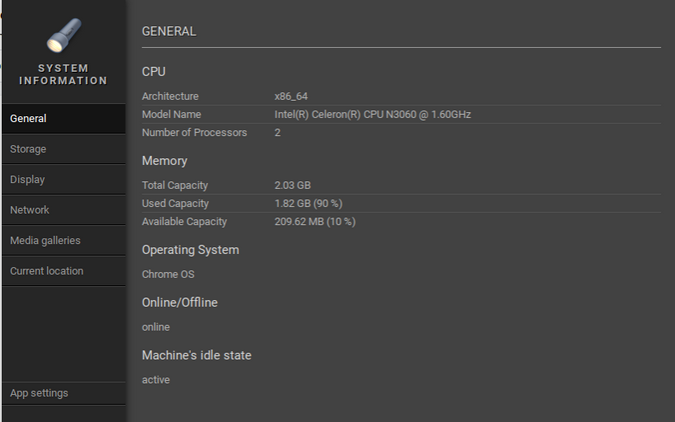
(Don Watkins, CC BY-SA 4.0 )
If you plan on installing a lot of Linux applications, I recommend using a Chromebook with 4GB of RAM and more free disk space.
Linux setup (beta)
Once signed in to your Chromebook, move your mouse cursor to the lower-right corner of the screen where the clock is located, and left-click. A panel will open, at the top of which the options will be listed (from left to right): exit, shutdown, lock and open parameters. Select the Settings icon .
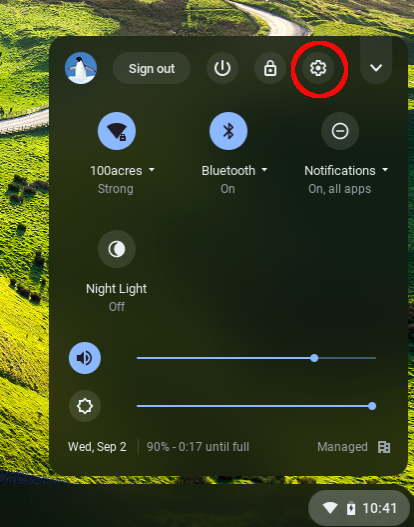
(Don Watkins, CC BY-SA 4.0 )
On the left side of the Settings panel, you will see Linux (Beta) listed .
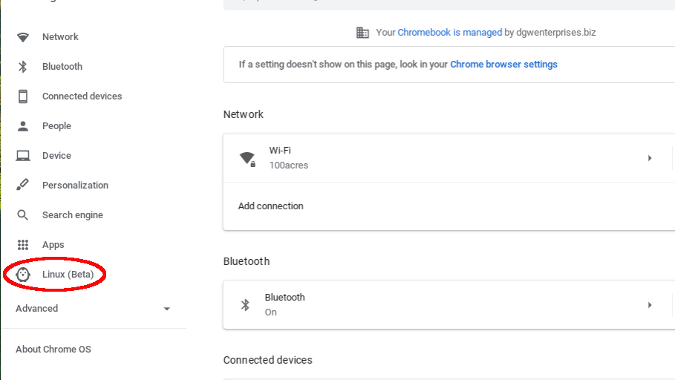
(Don Watkins, CC BY-SA 4.0 )
Click on Linux (Beta) and an option to run it will appear in the main panel. Click on the Turn on button .

(Don Watkins, CC BY-SA 4.0 )
This will start the process of setting up the Linux environment on the Chromebook.
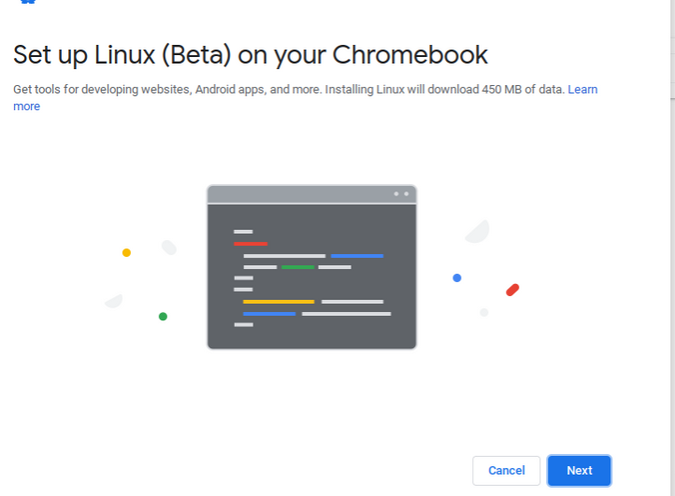
(Don Watkins, CC BY-SA 4.0 )
You will then be prompted for a Username and the size of your Linux installation.
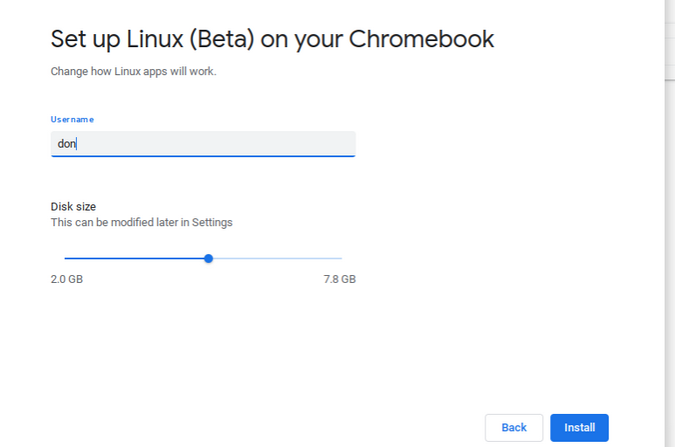
(Don Watkins, CC BY-SA 4.0 )
It takes a few minutes to install Linux on a Chromebook.
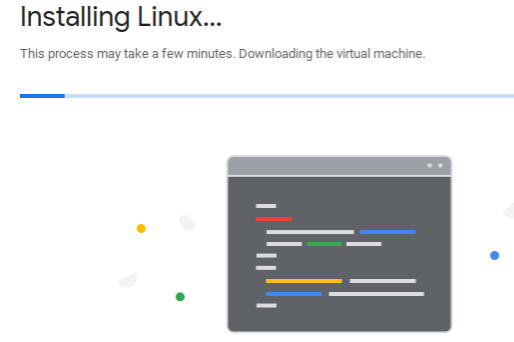
(Don Watkins, CC BY-SA 4.0 )
Once the installation is complete, you can start using Linux on your Chromebook. The menu bar at the bottom of the Chromebook display has a shortcut to the terminal , a text-based interface that you can use to interact with Linux.
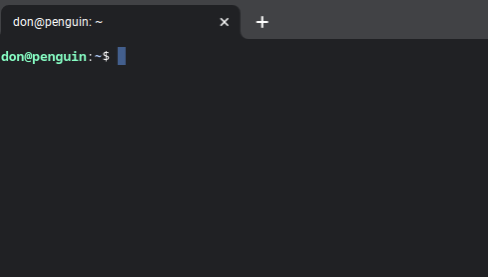
(Don Watkins, CC BY-SA 4.0 )
You can use the standard Linux commands such
lsas lscpuand topto get more information about the environment. Applications are installed by the team sudo apt install.
Installing the first Linux application
The ability to install and run free and open source software on a Chromebook gives you a wide range of possibilities.
The first thing I recommend is to install the Mu editor app for Python. Install it by entering the following into the terminal:
$ sudo apt install mu-editorIt takes a little over five minutes to install, but you end up with a great Python code editor.
I have used Mu and Python as a learning tool with great success . For example, I taught my students to write code for the Python turtle module and execute it to create graphics. I was frustrated that I could not use Mu with BBC open hardware board : Microbit . Even though Microbit connects to USB and the Chromebook has USB support in the Linux virtual environment, I couldn't get it to work.

(Don Watkins, CC BY-SA 4.0 )
After installing the application, it will appear in the dedicated Linux Apps menu , which is shown in the lower right corner of the screenshot.

(Don Watkins, CC BY-SA 4.0 )
Installing other applications
You can install more than just a programming language with a code editor. In fact, you can install most of your favorite open source applications.
For example, you can install the LibreOffice package with this command:
$ sudo apt install libreofficeThe open source audio editor Audacity is one of my favorite learning apps. My Chromebook's microphone works with Audacity, which makes it easy for me to create podcasts or edit free sounds from Wikimedia Commons . Installing Audacity on a Chromebook is easy - with the Crostini virtual environment open, open a terminal and enter the following:
$ sudo apt install audacityThen launch Audacity from the command line or search for it under Linux Apps in the Chromebook menu.

(Don Watkins, CC BY-SA 4.0 )
I also easily installed TuxMath and TuxType , a couple of great educational programs. I even managed to install and run the GIMP Image Editor . All Linux applications come from the Debian Linux repositories.
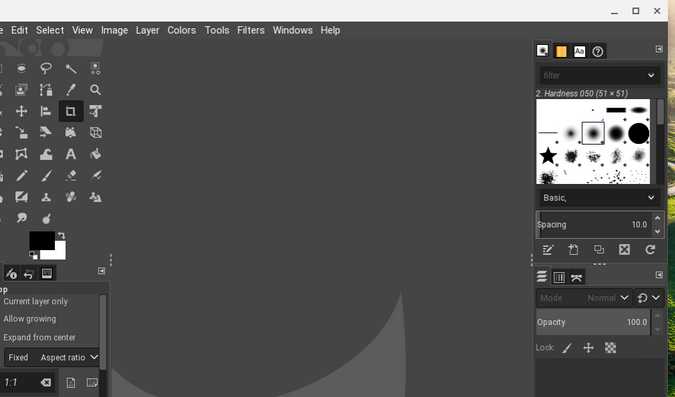
(Don Watkins, CC BY-SA 4.0 )
File transfer
Linux (beta) has a utility for backing up and restoring files. You can also transfer files between a Linux virtual machine (beta) and a Chromebook by opening the Files app on the Chromebook and right-clicking on the folder you want to transfer. You can transfer all files from your Chromebook, or create a dedicated folder for shared files. While in a Linux virtual machine, the folder can be accessed by navigating to
/mnt/chromeos.
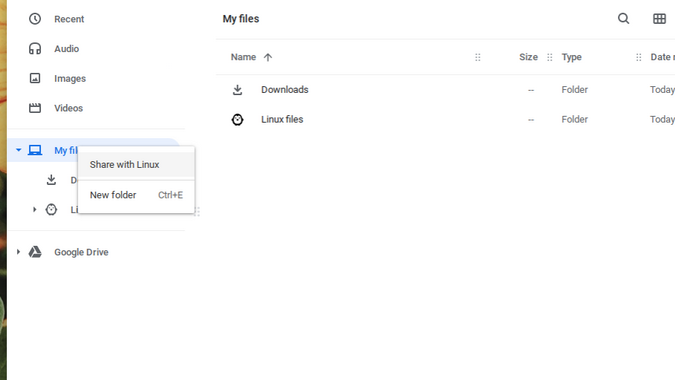
(Don Watkins, CC BY-SA 4.0 )
Additional Information
The Linux (beta) documentation is very detailed, so take a good look at it to see what it can do. Here are some important aspects taken from the documentation:
- Cameras are not yet supported.
- Android devices are supported via USB.
- Hardware acceleration is not yet supported.
- There is access to the microphone.
Do you use Linux apps on your Chromebook? Let us know in the comments!
Advertising
VDSina offers servers for rent for any task, a huge selection of operating systems for automatic installation, it is possible to install any OS from your own ISO , a convenient proprietary control panel and a daily payment.
